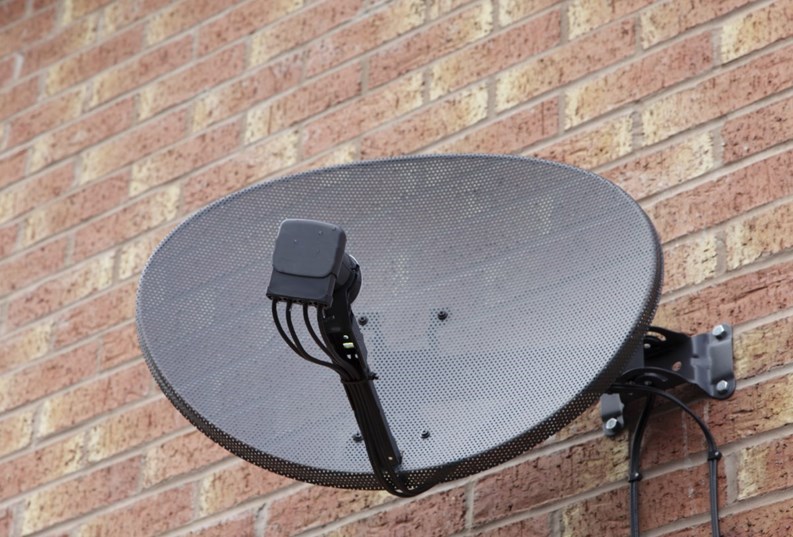While the era of massive, NASA-sized satellite dishes is long past (unless you’re in a very old building, or have held on to an antique dish out of nostalgia), the advent of smaller apparatus—as well as rooftop cell phone towers—has brought challenges along with the convenience.
Satellite dishes—which, according to the Telecommunications Act of 1996, are legal in co-ops, condos and HOAs—have sprouted on the outside of many residential buildings in recent years, causing aesthetic as well as safety worries from concerned citizens, boards and management companies, and liability issues from insurance companies. The other exterior technology—cell phone towers—which have also popped up—can be a source of revenue for buildings which opt to allow them on their roof spaces—but they can also pose structural threats if not installed and maintained properly.
Big Business
Cell phone towers—especially in New York City—are big business. In the United States, there are more than 190,000 cell phone towers—and there were only 900 in 1985, according to Airwave Management LLC. Airwave Management also estimates that more than 100,000 new cell towers will be constructed during the next decade. The average cost of building a cell phone tower is $150,000—but it’s worth it. The average yearly cell phone tower lease rate is $45,000 in the United States. Massachusetts has the highest cell tower lease rates, and they range from $91,000-$535,000, while New York comes in a close second. Their rates range from $30,000 to $535,000. Residential and commercial sites lease cell phone towers for average around $1,000 to $3,500 per month.
The major cell phone carriers ignored repeated requests for comments or declined to comment for this article.
Buildings and churches can hide cell towers on their rooftops. Typically, the cell tower company or wireless service provider would negotiate a lease for an installation site, and the company would service and maintain the tower. The building would benefit by receiving the rental income. This began in the 1980s, and there is much competition for cell phone companies to get into a coveted building, with some cell towers offering to buy out existing cell tower contracts and pay higher rent, since there are only so many buildings remaining sans cell phone towers.
Before the cell phone tower can go up on the top of a building, however, the rooftop must be tested to make sure it can support the weight of the tower. This created much controversy a few years ago, for example, when a T-Mobile and an AT&T cell phone towers were installed on a New York building at 165 Pinehurst Avenue. The Buildings Department approved the landlord’s application to put up the stations after determining that the plans complied with the buildings code, though the tenants sued the landlord for letting the stations be installed, saying that the building was being crushed by the two tower’s weight.
When it comes to DishTV satellite units, it’s an entirely different story because it’s typically the renter or the owner of the individual unit who installs them.
Over-the-Air Reception Devices
In 1996, the Federal Communications Commission (FCC) adopted rules for Over-the-Air Reception Devices (OTARD) rules, says Eric Goidel, a partner in the Manhattan-based law firm of Borah Goldstein Altschuler Nahins & Goidel P.C. and the president of Director Protector, a subsidiary of the law firm that provides proactive legal advice to cooperative and condominium boards.
“The OTARD rules prohibit restrictions on a property owner or tenant’s right to install, maintain or use an antenna to receive video programming from direct broadcast satellites, broadband radio services and television broadcast stations,” Goidel says.
These OTARD rules were created for a specific reason.
“OTARD was established to ensure that individuals had unfettered access, to the greatest extent possible, to over-the-air communications,” says Stacey Patterson, counsel and a member of Manhattan-based law firm Herrick, Feinstein LLP’s Community Association Practice Group.
The OTARD rules apply specifically to dishes that are 1 meter or less in diameter used to receive direct broadcast services.
“Due to the existence of OTARD, co-ops and condos cannot impose restrictions on exclusive use or limited exclusive use property which causes undue delay in receiving these guaranteed signals or increase the cost of installation and maintenance by the owners,” Patterson says.
But, there are exceptions to every rule, and OTARD is no exception—especially when it comes to safety.
Under those rules, an owner or a tenant has the right to install an antenna that he owns or rents over which he has exclusive use or control. This includes single-family homes, condos, co-ops, townhomes and manufactured homes, Goidel says.
“In the case of condominiums, cooperatives and rental properties, the rules apply to exclusive use areas, like the interior of apartments, terraces, balconies or patios,” Goidel says.
Exclusive use means an area of the property that only the unit owner or renter and people they permit may enter and use. If the area is shared with other or accessible without a unit owner’s or renter’s permission, it is not considered an exclusive use area.
Still, there are even more exceptions when it comes to the satellite dishes.
The OTARD rules do not apply to common areas that are owned by a landlord, a community association or in common by condominium owners, Goidel says. These common areas may include the roof or exterior walls of a multiple dwelling unit.
“Under certain conditions, if a common antenna is available for use by residents, then the community association or landlord may reject or not permit the installation of individually-owned antennae or satellite dishes, provided that the service and costs are substantially the same,” Goidel says.
There are restrictions necessary to prevent damage to leased property that are permissible—as long as the restrictions are reasonable.
“For example, a lease restriction that forbids unit owners or tenants from drilling holes through exterior walls or through the roof or affixing to balconies is likely to be permissible,” Goidel says.
Safety is another area where an association, landlord or local government may impose certain restrictions as long as there is a legitimate concern.
“An example of a safety restriction would be installing a satellite dish on a fire escape where it would block the pathway.
“Safety restrictions must be narrowly written so that they are no more burdensome than necessary to address a legitimate safety purpose,” Goidel says. “An association can require as of a condition of installation, that insurance be obtained.”
Placement an Issue
Safety isn’t the sole restriction, however—and co-ops and condos are not without any rights at all.
“For example, they can restrict the placement of these satellite dishes for safety reasons or if there are historical preservation concerns,” Patterson says. “Further, provided that the aesthetic restrictions do not violate OTARD (if a co-op or condo requires a dish to be painted to match the color of the building, said painting cannot violate the warranty on the dish or be held in violation of OTARD), they can be likely imposed.”
Another reasonable restriction, Patterson says, is to require that the dish isn’t placed in an unobtrusive place so as not to put anyone at risk of physical harm. The co-op or condo may also require the owner to indemnify the association for any damages that result from placement of the dish.
Another option that some buildings prefer to lessen the liability and the rules, is to require the owner to use a common satellite dish rather than individual dishes provided it meets certain requirements.
This common dish must provide all—if not more—reception and transmission services than a unit owner could receive using his or her own antenna; It must provide all—if not more reception and transmission services than a unit owner could receive using his or her own antenna; It must require any extra costs to the owners beyond that of installing and maintaining a personal antenna; And installation and connection to the common antenna must not result in any delay beyond what a unit owner would experience in installing and maintaining a personal antenna, Patterson says.
Sounds Complicated?
“Co-ops and condos are recommended to consult with OTARD before establishing restrictions, and keep their restrictions within the rule and as limited as possible to meet their purpose,” Patterson recommends.
Or, they can go another route, which some buildings have done – and find that it’s easier than dealing with the rules and the aesthetics of dishes.
Many of the newer buildings are including cable television as one of the amenities that comes with a unit—whether that unit is rented or owned. Therefore, the residents have no reason to get a satellite dish—or any other external apparatus. It solves all the issues at once—and it gives the building another way to attract residents, as many people are drawn to amenities.
But seeing as many electronic items continue to shrink—it would be no surprise if the external satellite dishes are a non-issue in a few years, when the companies producing them manage to make them so small that they are aesthetically pleasing and are able to be put anywhere, even on a fire escape without being hazardous due to their size.
Placing an antenna or other telecom technology on your property can be a smart, lucrative move for a condo or co-op association—as long as you stay on the right side of the law (and your own governing docs), do your homework, and partner with an experienced, reputable carrier/installer.
Danielle Braff is a freelance writer and a frequent contributor to The Cooperator.







Leave a Comment